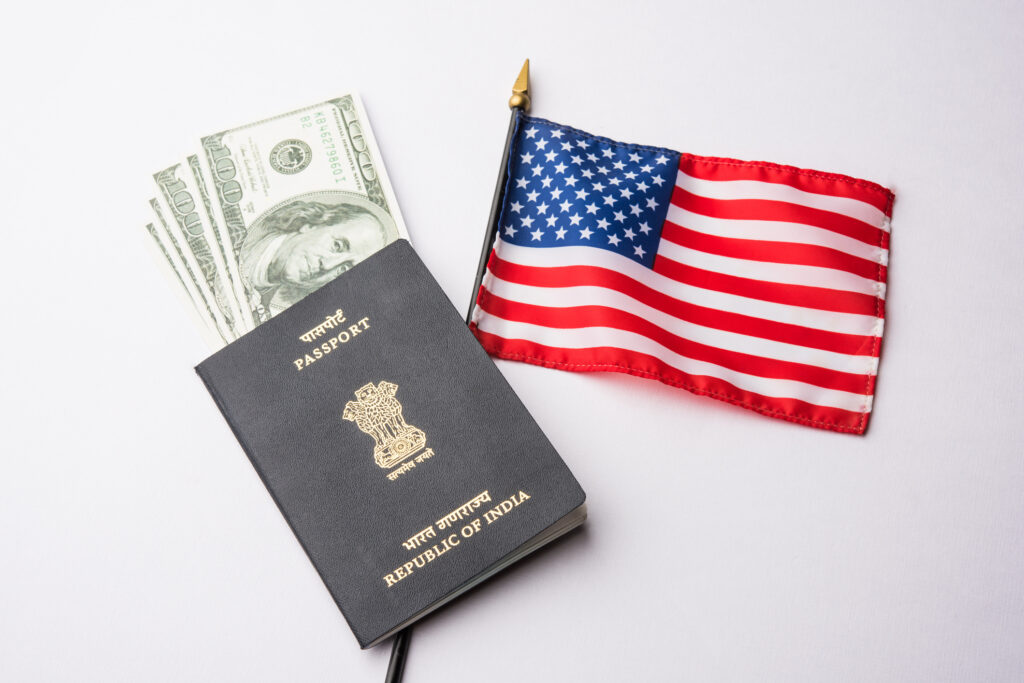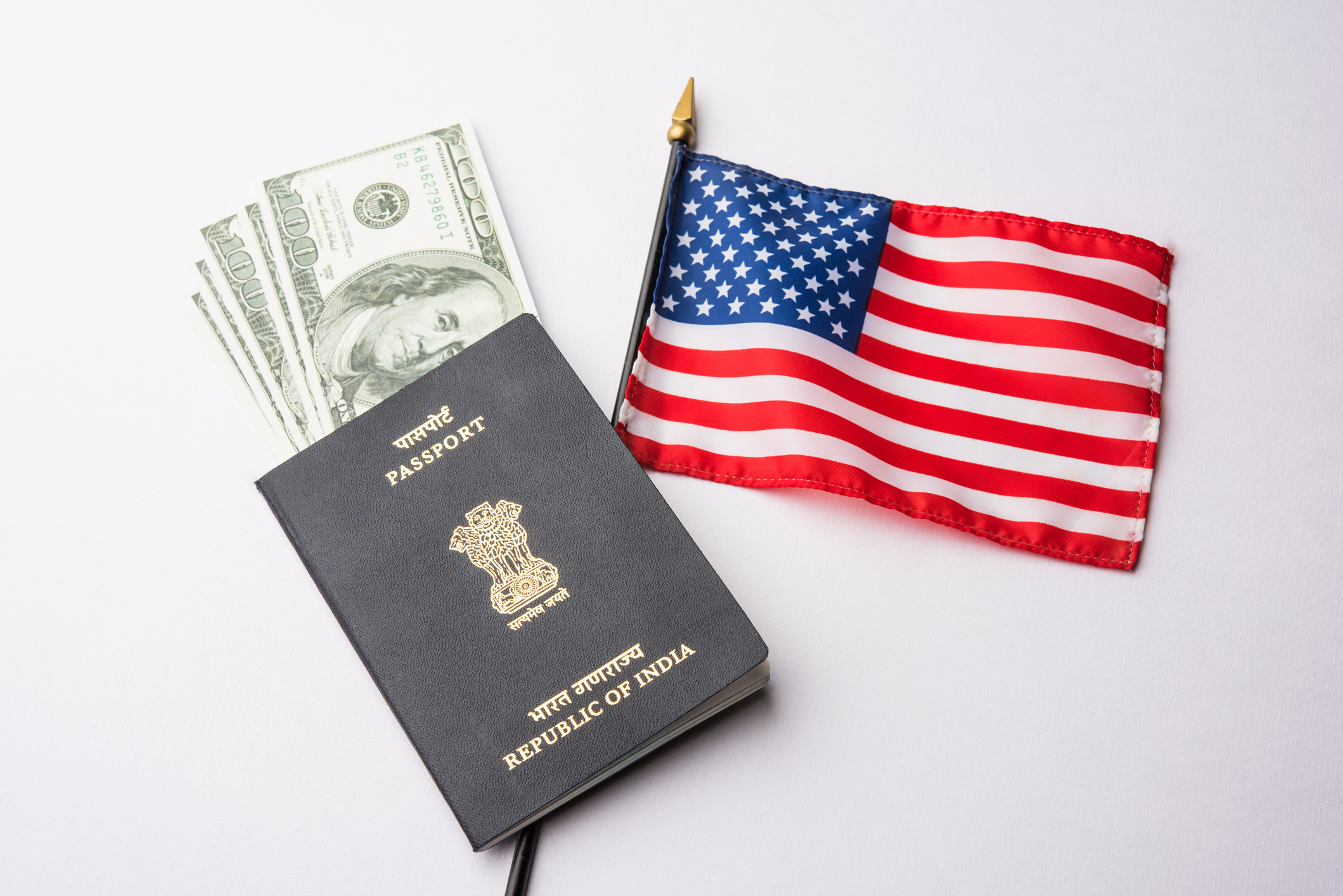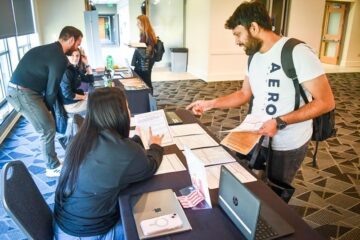
By Sebastian Marrero
Featured image: iStock
In this article, I will discuss a few of the many economic benefits that H-1B workers provide in strengthening the U.S. economy, additionally talking over past efforts that have been made to weaken or remove the program altogether. Finally, I will argue that increasing visa caps and changing the way the program chooses its recipients will form a safer, stronger, and more equitable visa program for skilled foreign workers.
What is H-1B?
Foreign workers form an integral part of the American economy. According to the U.S. Department of Labor, they comprise 17.4 percent of the labor force. For technical fields that require extensive experience and education, demand for highly specialized foreign labor among U.S. employers is continuing to grow, bringing with it a need to expand and reform immigration law. The H-1B visa program is the primary way for skilled foreign labor to be sponsored in the United States, enabling U.S. employers to fill critical knowledge and technical gaps in their companies. H-1b visas are temporary, non-immigrant visas requiring at least a bachelor’s degree or the equivalent, or more generally, the “application of a body of highly specialized knowledge” (U.S. Department of Labor), meaning immigrant workers who apply have an extensive set of credentials in their fields that make them highly qualified and worthy of contribution to U.S. employers.
Unfortunately, The H-1B Visa program has been a historically neglected program within immigration law. Ever since Congress created the category in 1990, the annual statutory cap of accepted visas has been historically limited to 65,000 with an additional 20,000 for applicants who hold a masters degree. Maintaining the statutory cap at such an arbitrarily low number ignores the persistent demand from U.S. employers for the knowledge and expertise provided by foreign labor in industries within STEM fields, with demand for H-1B workers reaching around 336,107 applications in 2017 (USCIS).
Additionally, the visa selection process has operated under a lottery system, undercutting the meritocracy process involved with accepting truly qualified applicants. In addition to the legal pitfalls enabled by the inherent design of the flawed H-1B system, cases of fraud, wage-theft, and employer negligence committed by U.S. employers makes it more difficult for skilled foreign labor to securely and fairly live in the country. Despite the negligence exhibited by the U.S. government in supporting hundreds of thousands of skilled workers seeking employment in the United States under H-1B, the program has consistently delivered beneficial results for the industries and geographical areas relying on foreign worker expertise. On top of providing distributional fiscal effects in the form of added production capacity, lower unemployment rates, added job security for native workers, added consumer spending, and added government tax revenue, immigrant talent has also increased firm-wide success rates with the innovative productivity that they enable.
The benefits of the H-1B program
H-1B workers have been shown to provide an aggregate positive impact on overall wages in the labor market. Despite arguments attempting to prove that an influx of foreign workers in specialized occupations drives down wages, several studies show that the introduction of H-1B recipients encourages growth in overall wages for American workers. According to Giovanni Peri, et al. (2014), The H-1B visa program, from its inception in 1990, has been associated with significant increases in wages for college-educated, U.S. born workers in over 219 U.S. cities in STEM fields. Specifically, a 1% increase in foreign STEM workers’ share of a city’s total employment was correlated with 7% to 8% upticks in wages paids to both STEM and non-STEM college-educated U.S. workers, and 3% to 4% upticks in wages paid to non-college educated workers (Giovani Peri et al., 2014). Wage growth by industry has also been measurable in the presence of large shares of H-1B petitions. According to the American Immigration Council on the H-1B visa program, wage growth for workers in occupations with significant shares of H-1B petitions was substantially higher than for occupations with lower H-1B petitions. For example, the Computer Systems Design Services category experienced a 5.5% wage growth since 1990 and 7% wage growth since 2009. In comparison, wage growth across all industries was nominal, growing only 0.8% since 1990 and 1.6% since 2009.
H-1B recipients have also experienced substantial gains in wage growth over the course of decade intervals, often overshadowing wage growth received by native workers. Data has shown that H-1B workers experience among the highest wages received in the United States, with median wages surging to the top 10% of wages for native workers in the United States, according to David J. Bier (2022). Additional data from the Department of Homeland Security corroborates Bier’s findings, with the median wage for an H-1B worker in 2021 rising to $108,000 – well over the median wage for all U.S. workers, and just above the 90th percentile earnings for U.S. workers at $102,810. H-1B wage growth has exceeded that of U.S. based workers, with the nominal median growing 52% in comparison to just 39% from 2003 to 2021.
Such wage increases among H-1B recipients are indicative of contributed growth in the American economy, with billions of dollars worth of productive capacity and significant increases in tax revenue associated with foreign workers. The data also suggests that H-1B recipients provide hard-to-find expertise that cannot be found in domestic workers, which is adequately reflected by the increased wages. Additional data from Ruiz and Krogstad (2017) show wage increases among H-1B recipients compared to native computer workers from 2007 to 2016. Median salaries among H-1B applications have grown from $73,979 to over $80,000, while native-born computer workers only saw wages increase from $65,455 to $75,036 (adjusted 2016 dollars) (U.S. BLS). Over 60% of H-1B workers sought employment in computer and mathematical occupations, indicating that foreign-born workers outperformed native workers in wage growth in that occupation. These substantial wage differences are due entirely to the ballooning demand of H-1B applications, with USCIS data showing that visa applications filed by employers on behalf of foreign workers increased from 246,126 in fiscal year 2009 to 399,349 in fiscal year 2016. Overall, U.S. employers filed more than 3.4 million visa applications from 2007 through the first nine months of fiscal year 2017. As will be described in detail later, visa caps have remained at an arbitrarily low rate, meaning supply of labor coming into the country has remained constant. Intuitively, increasing labor demand and a constant labor supply will drastically shoot wages up for skilled foreign labor.
U.S. labor employment rates are also significantly impacted by H-1B recipients. Data suggests that H-1B workers complement U.S. workers by expanding job opportunities for every type of worker and lowering unemployment rates in various jobs within STEM occupations. Data presented by the Information Technology Industry Council and the U.S. Chamber of Commerce (2012) suggests that “unemployment rates remain relatively low for occupations that use large numbers of H-1B visas” as opposed to the overall national unemployment rate. Low unemployment rates indicate that demand for specialized labor exceeds domestic supply, allowing foreign labor to fill key gaps in these industries. According to Giovanni Peri et al. (2014), had the U.S. government not rejected the overwhelming demand for 178,000 H-1B Visa applications due to low visa caps, U.S. metropolitan areas could have created as many as 231,224 tech jobs for U.S. born workers in computer-related fields in the two years that followed.
Why limiting the H-1B program is a terrible idea
Removing the H-1B system or limiting annual statutory caps, as has been attempted by a set of executive orders imposed by the Trump administration in 2020, would mark a drastic regression of progress for the visa program. Considering the employment-based green card system was designed to be a second step for H-1B workers seeking a more permanent citizenship status in the country, removing H-1B visas will severely shrink the green card system for skilled workers while decreasing the number of skilled workers in the United States overall. Consequently, employment-based immigration will be harmed, destroying innovation encouraged by immigrant labor and dwindling any fiscal benefits that the economy enjoyed as a result. In addition to severely harming employment-based immigration, limiting the H-1B visa program would also cause the US to lose much of its competitive edge in global tech since skilled foreigners would be less inclined to apply for jobs in the US in fear of unfair treatment at the hands of a bureaucratic, mercurial American government. Workers who do choose to apply will get rejected at higher rates, which presents an opportunity for European and Asian companies to recruit the top talent that forwent employment in the US.
The case for improving and revitalizing the H-1B program
One important pillar of reform regards restructuring the way the program selects recipients. When US companies are restricted in their ability to hire foreign talent, many respond by offshoring company operations or even using overseas contractors, which presents a significant threat for the creation of American jobs. This is because foreign workers generally serve as excellent complements to American workers, and thus adding positions for H-1B workers will increase the number of positions for American workers. In addition to increasing annual statutory caps to increase the inflow of foreign labor supply, Liya Palagashivili of the Mercatus Center at George Mason University argues in favor of replicating Canada’s “quasi-merit-based system” for attracting foreign talent by “granting permission to individuals who obtain a high number of merit-based points, which are based on factors such as individuals’ education levels, work experience, a current job offer from a Canadian company, their language skills, and so on” (Palagashvili, 2021). Under this system, individuals who have excellent educational and occupational credentials, language skills, and a tangible job offer can obtain a number of points to enter Canada as a foreign worker. Palagashvili points out that, since implementing this system, Canada has become one of the top destinations for high-skilled talent around the world. A critical step in the right direction for the American H-1B visa system could begin through a combination of increased annual statutory visa caps and a lottery reform into a merit-point-based system.
Increasing H-1B visas can also foster substantial growth in tech-startups, namely in how successful their market valuations are and how effectively they build capital. A paper by Dimmock et al finds that US startups with more H-1B visa acceptances are more likely to have a successful exit via an initial public offering or acquisition relative to other companies that had lower rates of H-1B visa acceptances. Moreover, they find that companies with greater H-1B visa acceptances are more likely to receive external financing over three years relative to companies that did not have as many H-1B acceptances. These findings suggest how crucial foreign labor is to firms in generating innovation and stock market value, ultimately indicating that H-1B workers could provide an aggregate effect that significantly boosts the innovation, productivity, and profitability of computer and tech industries.
Conclusion
It is difficult to fully understand the complexity and implications of the H-1B visa program in the United States. The tech industry has benefited enormously from the high-skilled immigration, and employers across a number of industries have used the visa program to fill critical gaps in their labor force, despite many experts believing that American labor can fully well fill these key gaps in worker expertise. As it stands, the H-1B visa program is currently in a highly precarious position. According to the Harvard Business Review, at least four proposals to limit the program have recently surfaced, the former Trump administration has tried through the imposition of executive orders to eliminate the program altogether, and the US Citizenship and Immigration Services Department has suspended expedited processing of H-1B applications. More extensive reform may permanently make it more difficult for companies in tech and other STEM industries to hire foreign workers, and severe limitations could cost the U.S. its competitive advantage in the global competition for technological innovation and talent. What this indicates, ultimately, is how central a part immigration plays in making the United States one of the leading tech hubs in the world. As it stands, it is more important than ever to maintain and expand the H-1B program to continue to attract top global talent. Only then will the US continue its global foothold as a technological economic superpower.




